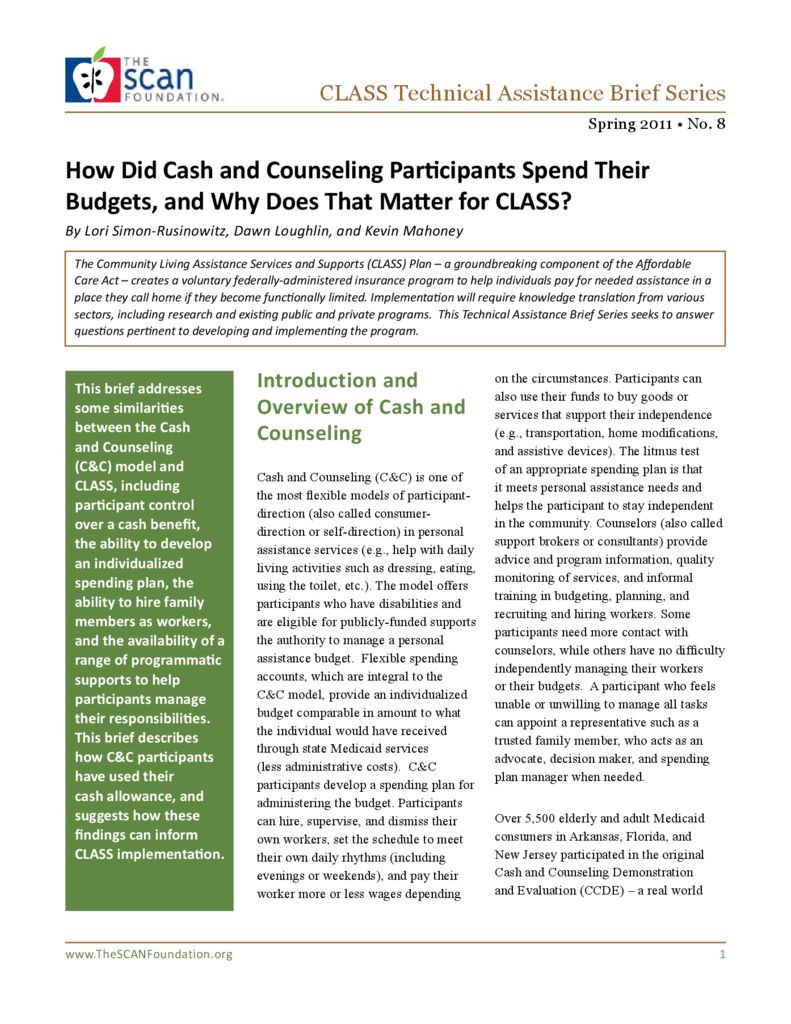How Did Cash and Counseling Participants Spend their Budgets, and Why Does That Matter for CLASS?
summary
This policy brief addresses some similarities between the Cash and Counseling (C&C) model and CLASS, including participant control over a cash benefit, the ability to develop an individualized spending plan, the ability to hire family members as workers, and the availability of a range of programmatic supports to help participants manage their responsibilities.
Date Updated: 04/06/2011Cash and Counseling (C&C) is one of the most flexible models of participant direction (also called consumer direction or self-direction) in personal assistance services (e.g., help with daily living activities such as dressing, eating, using the toilet, etc.). The model offers participants who have disabilities and are eligible for publicly-funded supports the authority to manage a personal assistance budget. Flexible spending accounts, which are integral to the C&C model, provide an individualized budget comparable in amount to what the individual would have received through state Medicaid services (less administrative costs). C&C participants develop a spending plan for administering the budget. Participants can hire, supervise, and dismiss their own workers, set the schedule to meet their own daily rhythms (including evenings or weekends), and pay their worker more or less wages depending…
Download the publication for all visuals and complete references.
Continue Reading
This policy brief provides an introduction to The SCAN Foundation’s CLASS Technical Assistance Brief Series, which explores many of the critical issues to be considered for successfully implementing CLASS.
This policy brief describes the broad needs of individuals with disability and the wide range of supportive and environmental solutions that can allow for the most independent living possible. It suggests how findings on social and environmental supports for individuals with disability can inform implementation of CLASS.
This policy brief provides background on the historical development of benefit eligibility triggers in the private long-term care insurance market. Understanding how these triggers came into being can provide important information to those charged with implementing the CLASS Plan.


